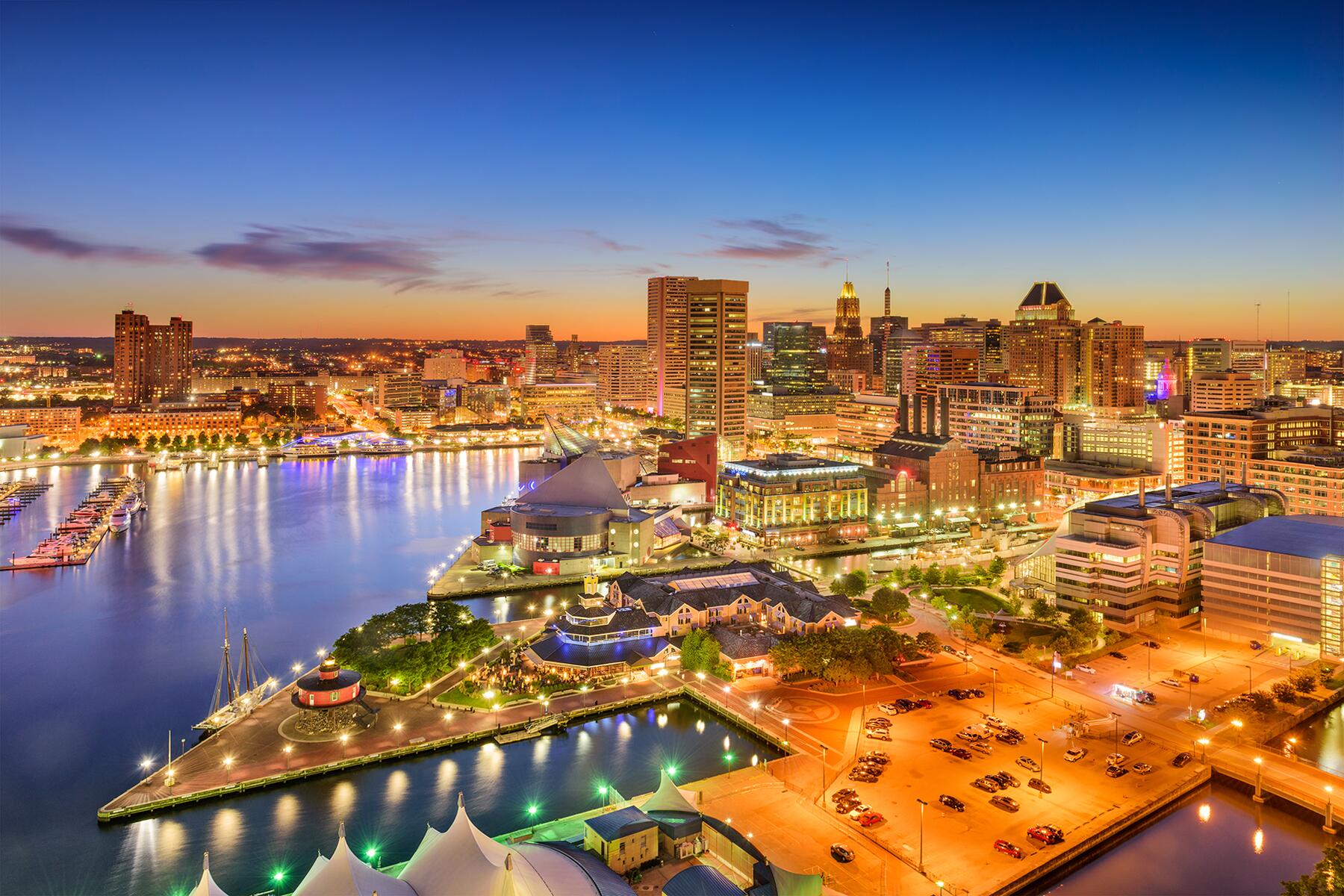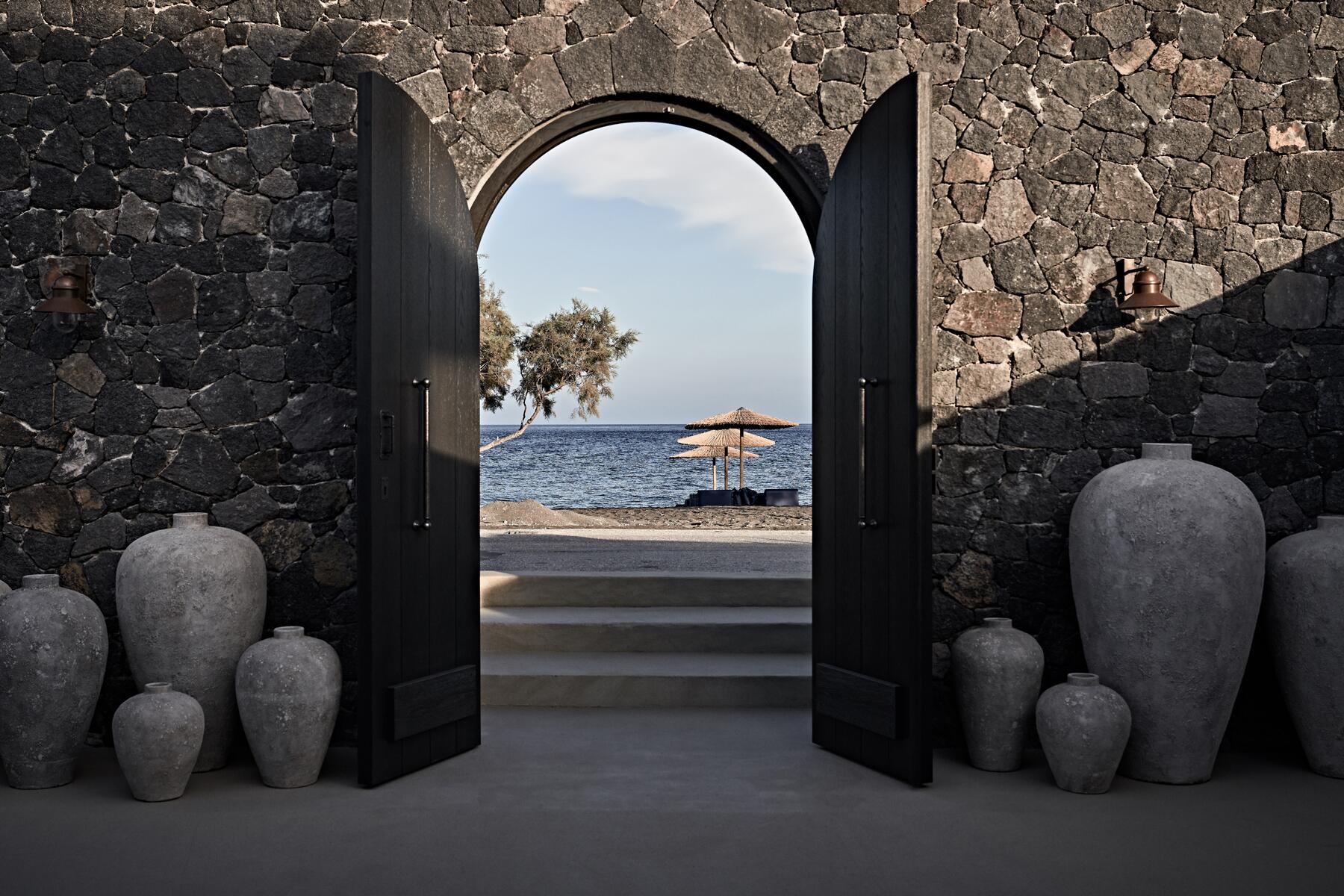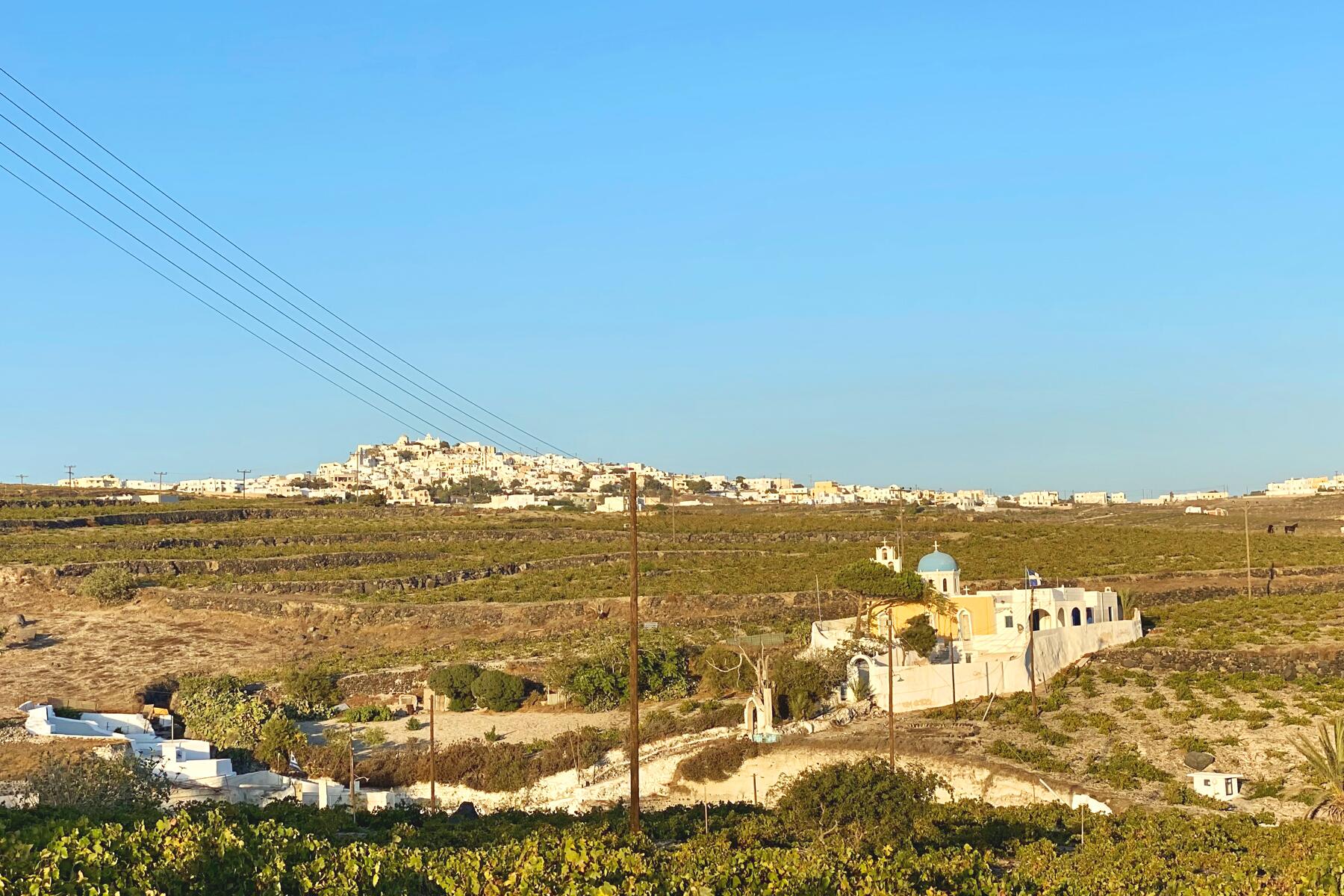“Psst. Look over here.”
There are two major roads on the Greek island of Santorini—an upper and a lower. Both can be dangerous. The lower hasn’t a name, but it avoids the mountain passes and runs half the length of the island. The upper is called Eparchiaki Odos, or the “Provincial Road,” and it crawls through the mountains at spine-tingling angles, all the way from the northern tip of Oia to the black-sand beach of Perissa, on the southern edge. Both thoroughfares are clogged with a combustible hodgepodge of aggressive taxi drivers, confused tourists in rental cars, overzealous motorcycle riders, and sluggishly slow ATVs. Sometimes people end up hurt. Sometimes they end up dead.
“Someone’s always dying on those roads,” a 14-year-old waiter told me after I lamented my stomach going soft due to a madcap taxi journey. The waiter launched into an unverified rumor of a Lithuanian bride who was smashed up the week before in a motorcycle accident. From her honeymoon to an early grave, all in one of the most beautiful places in the world.
None of the tourists here ever sense the danger, the lurking shroud of death, even during a murderous pandemic.
They’re all too overcome by the Very Fine View.
“Psst,” the Very Fine View says to them. “Look over here.”
And they do.
No doubt, many are unable to look away from the Very Fine VIew—unable even as they plunge over the side into their doom. They’re trapped by the gaze of impossible beauty. It lures them toward its rocky shores.
It lured me, too.

Forget Your Troubles
I’d come to Santorini to forget. Forget real-life, forget the pandemic. To play in the world of make-believe, the world that’s invented while you’re on vacation. To sit in a swimming pool, stare at a Very Fine View—no other expectations, no other wants.
The pool of Mystique, the hotel I called home for a short while, juts precariously from Santorini’s cliffs, a perfect vista for the Very Fine View. Its infinity edge merges with the horizon of the Aegean, interrupted by the four smaller islands of the caldera. This is an active volcano, something that’s easy to ignore, but it last erupted in 1950 and will almost certainly do so again. In fact, some locals gossip that the volcanic rumblings regularly continue; one local at a taverna swore to me that he’d seen boulders rise from the caldera like Godzilla—summoned by these earthquakes—appearing suddenly one day, disappearing the next.
It’s easy to forget that you’re floating in a pool on a volcano—the Very Fine View commands it, after all.
“Psst,” it says. “Look over here. Forget you’re a small man on a big volcano. Instead, enjoy that Very Fine View.”
(The one, incidentally, created by the big volcano.)
It’s easy to get lost in that Very Fine View, to float away into its marvelousness.

Up there, at the northern tippy-top of Santorini, the Very Fine View isn’t just of the sea, but the village of Oia. And Oia, the Candyland hillside town sprinkled with sugar-white buildings topped with gumdrop blue domes, is what you think of when someone whispers, “Santorini.” Its images fill your Instagram feed and nurse your wanderlust. And Mystique is probably in your feed, too. It’s an iconic property, chiseled right into the side of the mountain, like so much of this town. The rooms, all 41 of them, are burrowed into the volcanic rock; they’re individual caves. Once upon a time, Santorini’s industrious population started building into the mountain, rather than atop—the caves provided them a natural air conditioning. And now these ancient refrigerators are luxury hotels. Such is the way in Oia, where the sun scorches and the Very Fine View entices.
To leave the comfort of these caves is to expose yourself to the whims of Helios, Apollo, and Hemera (two Greek gods of the sun, plus a goddess of the daylight for good measure). But to abandon the sanctity and comfort of the hotel is to commit yourself to the fury of Eris, the goddess of chaos, because it means climbing the endless MC Escher stairs that hug Oia’s cliffsides. To do so in the high-noon sun is to give up your soul to the Maniae, the spirits of madness. But the Very Fine View commands it—it demands that you chase it, follow it. It seduces you into the belief that you need to see more, more, more. To find it at its most perfect, most intimate. To be alone with it. Just you and the Very Fine View. No one else around.

The Impossible Beauty of a Fabled City
The central part of the village of Oia is blocked from vehicles and has one main pedestrian road—although “road” is an exaggeration, as it’s barely wider than an alleyway and sometimes as narrow as a secret passage. The walkway, Nikolaou Nomikou, is lined with stores, mainly hawking tchotchkes and jewelry, and is as clogged as a plaque-crusted artery with cruiseshippers, influencers, newlyweds, retirees, hostel-dwellers, and the insidiously bougie who talk endlessly about The White Lotus without understanding that the show is ultimately about them.
The allure of the Very Fine View is hidden on much of Nikolaou Nomikou, blocked by the buildings on the south side of the street. So there’s very little peace here. And the crowds are claustrophobic. The breath of fellow tourists can be felt on your neck, ears, cheeks. Tranquility is as rare as water in a desert.
But suddenly, there’s an oasis. A parting between buildings. The Very Fine View triumphantly returns. It screams over the crowds. By being temporarily denied it within the narrow corridor, the Very Fine View is somehow even more impossibly beautiful now. Blue domed buildings defy gravity, one stacked perilously atop the other; Don Quixote windmills dazzle, the blades spinning in the sea breeze; and everywhere bougainvillea blooms in resplendent fuchsia tangles. A city that you’d expect only in a fairy tale, a Wonderland city, a Neverland town. It may even be a fabled village: the lost city of Atlantis.
Plato wrote of that mythical city in the 4th century B.C. And some historians contend it really existed—not sunken, but destroyed by a volcano. Specifically, the volcano of Santorini, around 1600 B.C. At that time, the most advanced peoples in Europe were the Minoans, who had a village on Santorini called Akrotiri, the ruins of which are found in the southwest of the island. When Santorini blew, it was one of the largest eruptions in human history: parts of the volcano collapsed, the current caldera formed, the Minoans were done for, and a legend was born.
“Psst.”
The emergence of the Very Fine View, a view that drips with the impossible beauty of a fabled town, screams at everyone on this narrow road. “Psst!” it shouts. “LOOK OVER HERE!”
Everyone does, everyone stops, everyone stares.
“DON’T LOOK AWAY!” We can’t, we won’t look away. Mesmerized like slack-jawed idiots. The eternal horizon touches 3,000 years of recorded history.
No one moves. A bottleneck ensues. Soon shoving commences. Curses are bemoaned in English, French, and German. We are forced to look away, pushed along as the slow trod continues.
But still it calls. “Psst. Come find me. Escape these hordes and find me alone.”
That Very Fine View is once again obstructed by buildings, hidden by curio shops selling tchotchkes, swallowed up like Atlantis so very long ago.

Where the Very Fine View Needn’t Shout
Santorini unofficially opens for business annually in April and unofficially closes in October. In those months, in a normal year, two million visitors converge on 37 square miles, dwarfing the permanent population of around 25,000. Seasonal workers flood in too, ready to staff the restaurants and hotels. I asked some of the residents, some permanent, others temporary, if they ever grow tired of such a Very Fine View. If they did, they wouldn’t admit it—to do so would be to defy the power of the Very Fine View. The closest I got to a “no” came from a waiter hailing from Sparta, who said she rarely sees Oia—“It’s too crowded so I won’t go”—but of the Very Fine Views on the south of the island, these she said, she can barely summon the strength to look away. And there are so few people exploring the south part of the island that she doesn’t have to.
“You can be alone with it,” she said.
Alone?
I packed my bags and headed there. Along the chaos road, southward from Oia, through the haunted mountain passes at breakneck speeds. The road calms at the modern capital, Fira. But the drive continues. Though Fira isn’t without beauty, it’s a neon-laced, techno-thumping, midnight town—an antidote to day-to-day reality, but not the antidote I’m after. The Very Fine View doesn’t lurk in Fira. The Eparchiaki Odos, the provincial road, continues, winding again, but without the steep cliffs. It curves past the turnoffs to the port and other hamlets and ruins, where the Very Fine View again re-emerges.
“Psst,” it says, “Come over here and look at what I can show you.” But the call is ignored, until the village of Megalochori.
There are no crowds here in Megalochori, and few people lolling around, with the exception of those staying at Vedema Resort, a sister-property of Mystique, where I also stayed. Around 300 villagers live here, surrounded by bucolic pastures and ancient vineyards. Santorini is one of Greece’s best wine regions—and is said to be one of the oldest in the world, dating back to the Minoan days of pre-eruption yore. In the Middle Ages, the Venetians, who controlled the island, exported wine throughout the Mediterranean, especially Vinsanto, a saccharine-sweet dessert wine, made from the Santorini grape varietal, Assyrtiko. From the edges of Megalochori, there’s a vista rivaling Tuscany or Napa: rows of Assyrtiko grapes, fat from volcanic soil, ripening under the Aegean sun.
“Psst,” comes the calling of the Very Fine View. “Drink up.”
The hotel, Vedema, is an old mansion on a sprawling estate. It’s a labyrinth of outdoor hallways and cobbled courtyards, populated by a parade of lazy cats stretching in the shade. Not far from Vedema is one of the most charming town squares in the Cyclades. A church bell rings, a gelateria vendor scoops, and waiters pour liters of wine at the three restaurants.
“Psst,” the Very Fine View says, still commanding attention. But its demand is softened, quieter. It doesn’t need to shout over the throngs of visitors. “I’m glad you found me here, where we can almost be alone.” But almost isn’t enough.

The Very Fine View’s Siren Call
There’s a bus that shuttles between Vedema and another sister property (these hotels have more siblings than the Kardashians), the Istoria Hotel in the village of Perissa. It’s in this village that the Eparchiaki Odos, the provincial road, culminates (or begins). This stretch of street is practically lackadaisical, a straight shot over the width of the island, with nary a curve. It runs past the little town of Emporio, where Jean-Paul Sartre and Simone de Beauvoir used to holiday in a castle that’s now an Airbnb, and finally dead-ends into the long span of black sand beaches that run from the hilltop of the ancient village of Thera in the north to the southern tippy-bottom of Santorini.
There’s a beach club at the Istoria—rows of loungers in 2×2 formations, white-shirted waiters serving fruity drinks, guests in designer bathing suits reading international fashion magazines. And, of course, it’s here, too: the Very Fine View. Here at the charcoal-smudged edge of the volcano, with our backs to the caldera, the Aegean is wide open.

“Psst,” the Very Fine View whispers. “Now’s your chance. Come closer.”
I walked across apocalyptic sand to the sea. In the shallow water, frolickers frolicked and splashed one another. I paused beside them.
“Closer.”
I’d never swum in the sea before, any sea. I’m a terrible swimmer. But now, beckoned, I walked with brazen courage, past the waders until I was dog-paddling toward where others swam.
“Closer.”
Determined, I somehow swam far enough out to be the only one. I looked toward the open vista and back toward that strange, special island. That wondrous fairy-tale explosion of impossible beauty. I kicked and paddled and panted.
I forgot everything: the roads, the crowds, the pandemic, even the ocean.
Lost in the ethereal loveliness, swallowed up by a sea once navigated by Odysseus, mind vacant, body floating far from land.
“Finally, alone,” says the Very Fine View, triumphantly.
Just me and the view. Out here in the middle of the Aegean, I found rest, I found peace. Just me and the view. And it was very fine, indeed.







